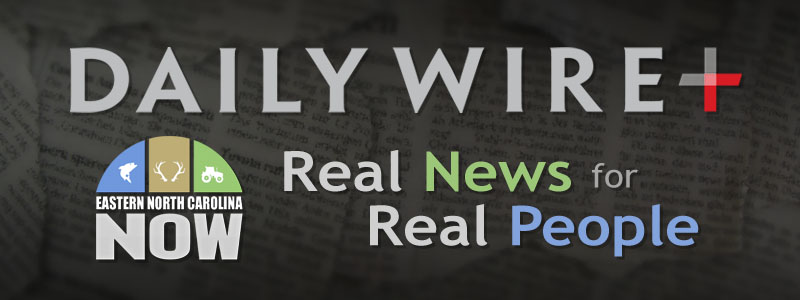Publisher's note: The author of this post is Barry Smith, who is an associate editor for the Carolina Journal, John Hood Publisher.
$22.2 billion General Fund package heads to conference committee so House and Senate can resolve differences
RALEIGH Early Friday morning, the state Senate approved its version of the $22.2 billion General Fund budget, setting the stage for negotiations with the House on a spending plan that legislative leaders hope will be completed before the new fiscal year begins on July 1.
The final 26-13 vote, taken just after midnight, occurred after minimal debate. The budget initially was approved Thursday afternoon by a 33-15 party-line vote Thursday afternoon.
The budget provides middle-class tax breaks, boosts teacher pay, expands the Opportunity Scholarship Program, and puts restrictions on tuition increases in the UNC system.
"I think this budget is about substance over soundbites," Senate leader Phil Berger, R-Rockingham, said at the close of Thursday's debate.

State Senate leader Phil Berger (foreground) and Sen. Harry Brown, R-Onslow, earlier this week (CJ file photo)
The chamber's minority leader, Sen. Dan Blue, D-Wake, took issue with some of the budget provisions.
"I see a lot of winners, but I also see a lot of losers," Blue said. He thought state employees should get a larger raise.
State employees
"can't afford to wait another year to get a pay raise," Blue said.
The Senate budget does not provide across-the-board raises for state employees. Instead, it offers merit raises averaging 1 percent and one-time merit bonuses averaging 1 percent.
Blue also chided the GOP leadership for the Opportunity Scholarship Program expansion in the budget, which he said could mean $1 billion of tax funding to private schools over the next 10 years in the form of vouchers. Blue said that money would be better spent providing broadband connectivity, supplies, and learning tools in the public schools.
Berger countered that the voucher program actually saves the state money in addition to providing lower-income families the means to send their children to a private school. The program provides up to $4,200 per year for vouchers to private schools.
"The average cost, state and local, of educating kids in North Carolina - what the government currently pays to public schools - is more than twice that," Berger said.
The Senate pared back one of the more controversial parts of its budget when it trimmed from five to two the number of UNC campuses that would fall under a $500 per-semester limit on in-state tuition. The change, proposed by Sen. Tom Apodaca, R-Henderson, removed three historically black campuses - Elizabeth City State University, Fayetteville State University, and Winston-Salem State University - from the requirement. That left Western Carolina University and UNC Pembroke under the new plan.
Apodaca said he'd received a death threat related to the provision. Sen. Don Davis, D-Greene, said he didn't like the original proposal, but that no public official should be threatened for offering a change in public policy.
Sen. Floyd McKissick, D-Durham, said he didn't believe there was
"a nefarious plan to sabotage the historically black universities," as some had claimed. But he said that Senate leaders should have built a consensus on the proposal before making such a dramatic proposal.
When the measure goes to a conference committee to work out differences between the House and Senate budgets, public schools will be the focus of many points of contention.
Teacher salaries will be one of the differences to be negotiated. The Senate proposed boosting average teacher pay from $47,783 to $54,224 over the next two years, an increase of more than 13 percent. The House proposal would increase teacher pay by an average of 4.1 percent during the next fiscal year.
Terry Stoops, director of research and education studies at the John Locke Foundation, noted a number of other differences in the House and Senate K-12 budgets. Among the larger ones:
- Technology: The House added $9.4 million for a digital learning plan; the Senate added nothing. The Senate unilaterally cut $10 million from school connectivity.
- Class size: The House cut $26.9 million aimed at reducing first-grade class sizes. The Senate added $27.1 million to reduce class sizes in second grade.
- Reading instruction: The House had a net cut of $10 million for Read to Achieve camps for first- and second-graders. The Senate made no change.
- Personnel: The House appropriated $25 million for literacy coaches. The Senate funded a $10 million pilot program for third-grade reading teacher bonuses. The plans also differ in administrator salaries and bonuses, with the House putting an emphasis on salary increases and the Senate favoring bonuses.
- School choice: The House funded $5.8 million for special education scholarships. The Senate added $632,500 to that line item. The Senate also allotted $34.8 million in reserves for the Opportunity Scholarship Program, with the House not adding to that program.
The Senate plan would increase the standard deduction for married couples filing jointly from $15,500 to $17,500 over two years. The House plan phases in the breaks over four years. The Senate also included a "market-based sourcing" tax on multistate corporations, taxing corporations based on the percentage of their services consumed in North Carolina.
The Senate plan also would place $583 million into the state's rainy day fund, compared to the House's $300 million appropriation.
























